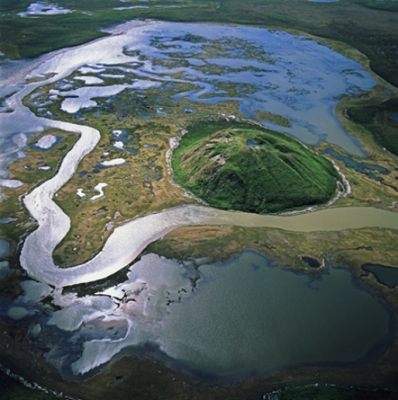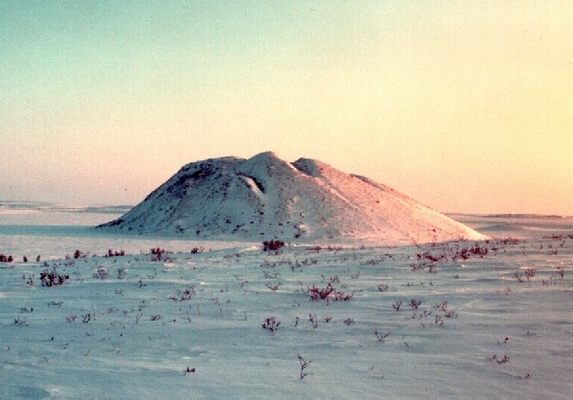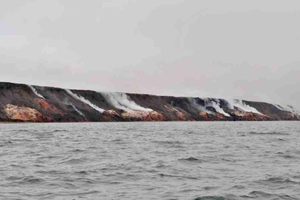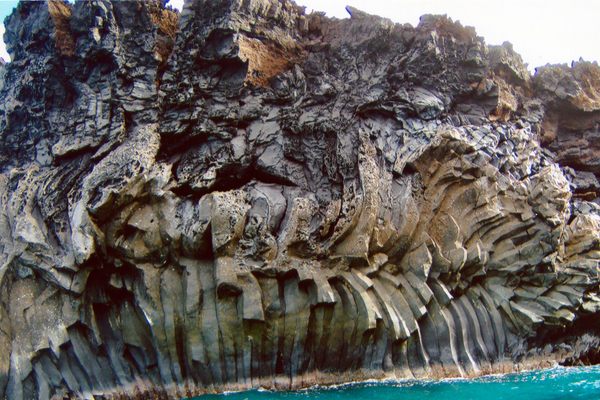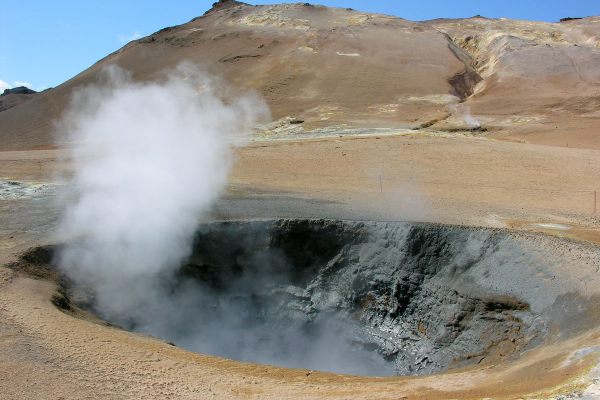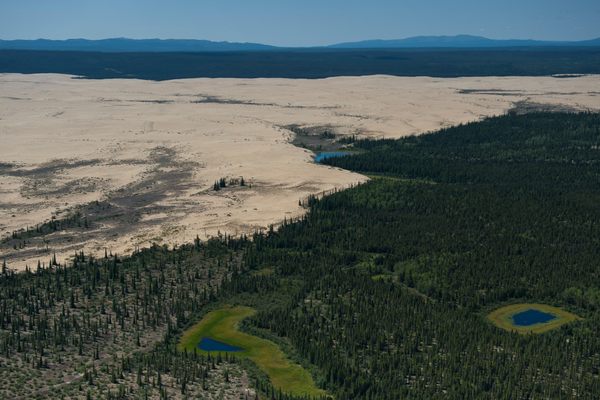About
A pingo, also called a hydrolaccolith, is a mound of earth-covered ice found in the Arctic and subarctic that can reach up to 70 metres (230 ft) in height and up to 600 m (2,000 ft) in diameter. The term originated as the Inuvialuktun word for a small hill.
In fact, a pingo is a 'periglacial landform,' which is defined as a nonglacial landform or process linked to colder climates. They are essentially formed by ground ice which develops during the winter months as temperatures fall. The plural form is "pingos".
Pingos usually grow only a few centimetres per year, and the largest take decades or even centuries to form. The process that creates pingos is believed to be closely related to frost heaving.
Pingos eventually break down and collapse. The current estimate is that pingos can last about 1000 years. Tuktoyaktuk in the Mackenzie Delta has one of the highest concentrations of pingos. Other places with pingos include Alaska, Greenland, and the Norwegian island of Spitsbergen. In Siberia, pingos are known as bulganniakh, from the Yakut language.
Related Tags
Community Contributors
Published
January 15, 2010


